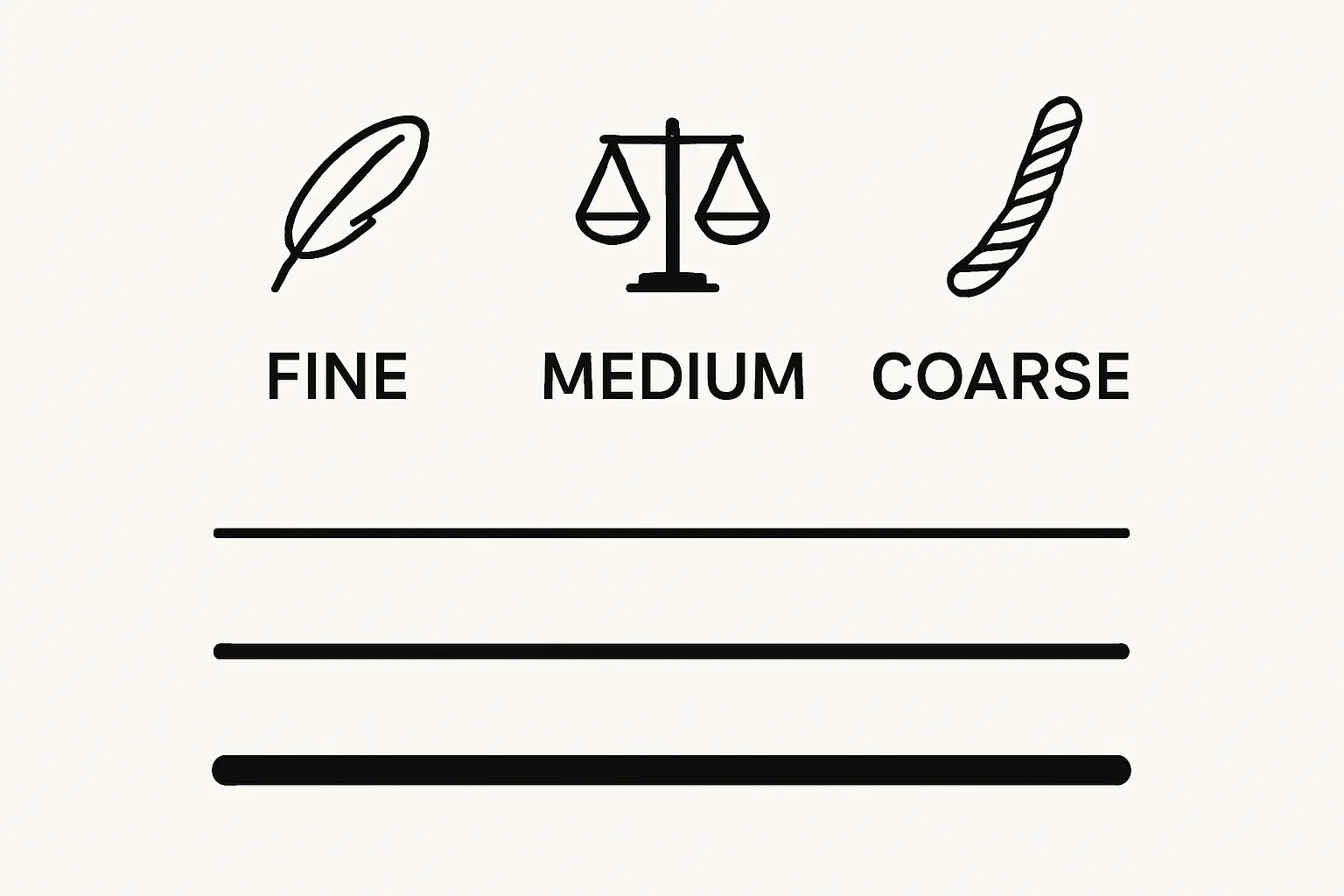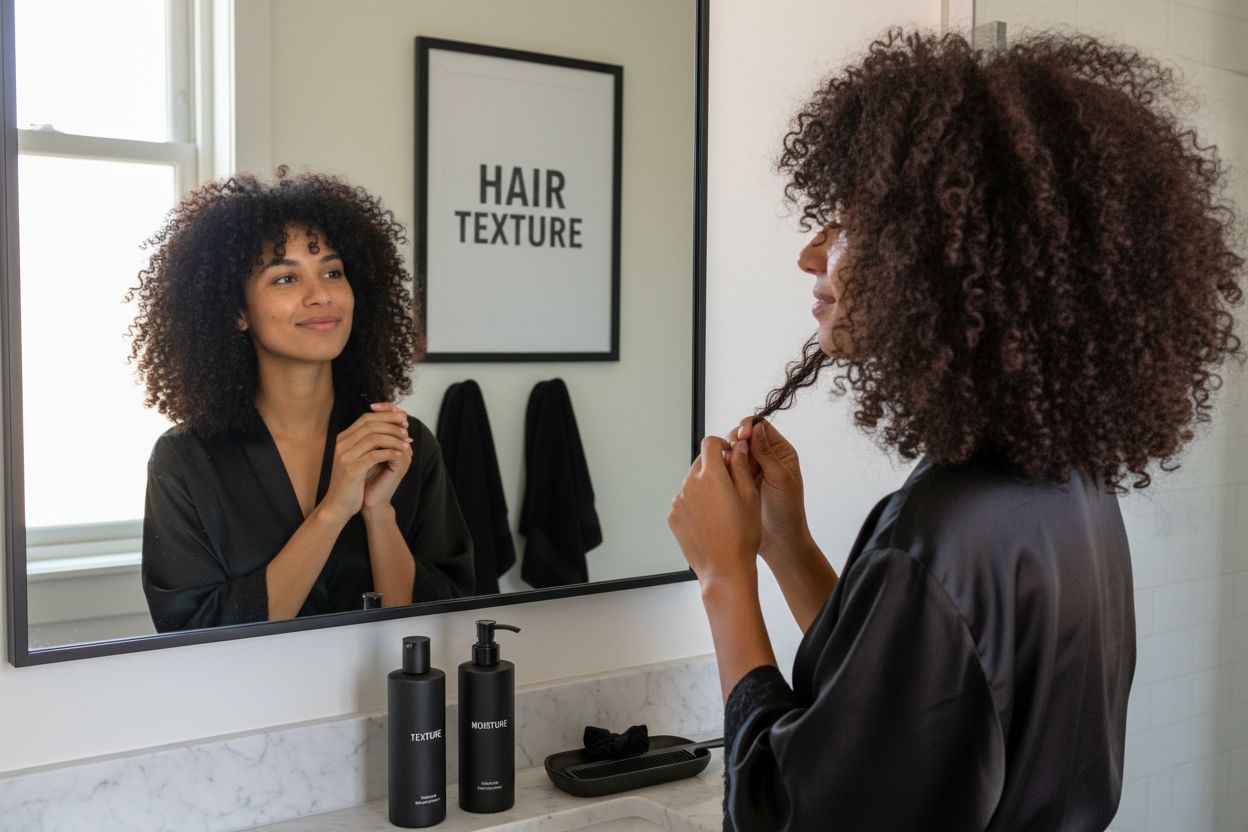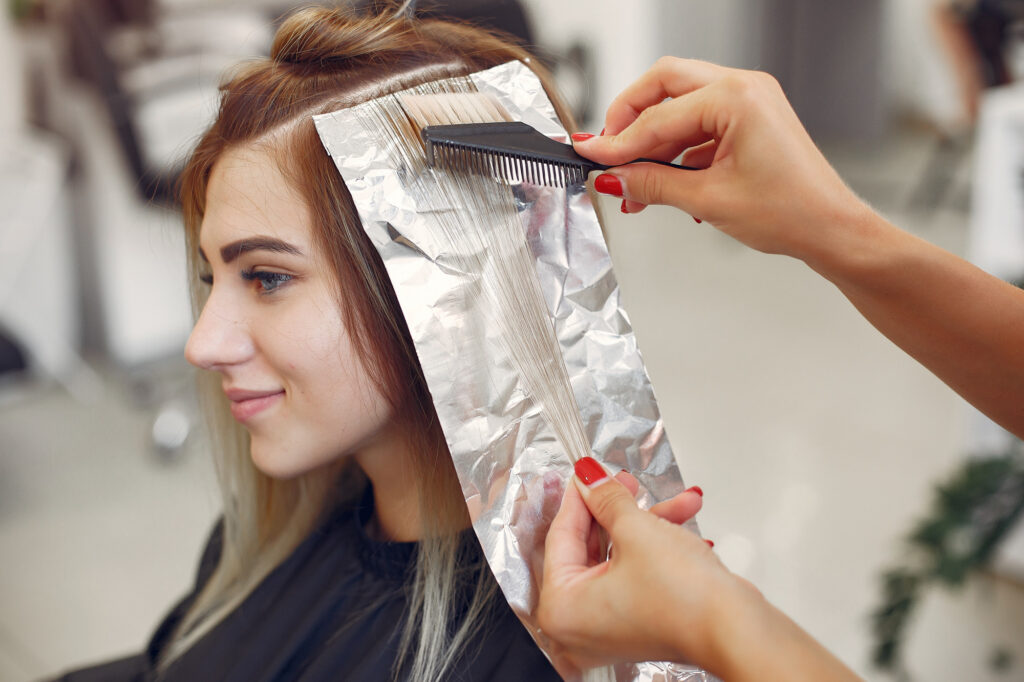Hair texture shapes more than just how your hair looks and feels. It actually determines how your strands absorb products, respond to styling, and even hint at your genetic background. Crazy as it sounds, the size and shape of tiny protein bonds inside each strand decide whether your hair grows straight, wavy, or curly and more than 90 percent of hair’s traits come straight from your DNA. That means hair texture is less about personal choice and way more about a hidden science most people never even consider.
Table of Contents
- Defining Hair Texture: Types And Characteristics
- The Significance Of Hair Texture In Styling Choices
- How Hair Texture Influences Hair Care Products
- Understanding The Science Behind Hair Texture
- Cultural Perspectives On Hair Texture And Beauty
Quick Summary
| Takeaway | Explanation |
|---|---|
| Understand your hair texture type | Identifying whether your hair is fine, medium, or coarse helps tailor your styling and care routine. |
| Select products based on texture | Choose hair care products formulated specifically for your hair type to enhance effectiveness and avoid damage. |
| Recognize genetic influences on texture | Awareness of genetic factors can explain why your hair behaves a certain way, aiding in better hair management. |
| Employ texture-specific styling techniques | Apply different styling methods according to your hair texture to achieve optimal results and maintain hair health. |
| Value cultural significance of hair texture | Understanding the cultural implications of hair texture enriches personal and communal identities, promoting inclusivity. |
Defining Hair Texture: Types and Characteristics
Hair texture represents the diameter, thickness, and natural pattern of individual hair strands, which fundamentally determines how hair looks, feels, and responds to styling techniques. Understanding hair texture goes beyond simple aesthetic considerations, revealing critical insights into hair health, maintenance requirements, and potential styling approaches.
The Scientific Foundation of Hair Texture
Hair texture originates from the unique structural composition of hair follicles and protein bonds. Research from the National Institutes of Health indicates that the shape and number of disulfide bonds between keratin proteins directly influence hair strand characteristics. These microscopic protein connections determine whether hair grows straight, wavy, curly, or coily.
The primary hair texture classifications include:

- Fine Texture: Thin strands with minimal protein density
- Medium Texture: Balanced protein structure with moderate thickness
- Coarse Texture: Thick strands with substantial protein concentration
Genetic and Environmental Influences
Genetics play a significant role in determining hair texture, with specific gene variations controlling follicle shape and protein distribution. Environmental factors like nutrition, hormonal changes, and hair treatment practices can also subtly modify hair texture over time. Ethnicity often correlates with distinctive hair texture patterns, though individual variation remains substantial.
Understanding your specific hair texture enables more effective styling, product selection, and overall hair care strategies. Professional stylists assess hair texture through visual examination and strand testing, considering factors like diameter, elasticity, and natural curl pattern to recommend personalized hair management approaches.
Below is a comparison of the primary hair texture types, summarizing their defining features and unique considerations for care and styling.
| Hair Texture Type | Strand Thickness | Protein Structure | Care Recommendations |
|---|---|---|---|
| Fine | Thin | Minimal protein density | Use lightweight, volumizing products |
| Medium | Moderate | Balanced protein structure | Balanced moisture and protein treatments |
| Coarse | Thick | Substantial protein content | Intensive hydration and strengthening products |
The Significance of Hair Texture in Styling Choices
Hair texture plays a pivotal role in determining the most flattering and sustainable hairstyle options, directly influencing how hair responds to cutting, coloring, and styling techniques. Professional stylists recognize that understanding hair texture is not merely an aesthetic consideration but a critical strategy for achieving optimal hair health and visual appeal.
Impact on Styling Versatility
Research from the Journal of Cosmetic Dermatology demonstrates that hair texture fundamentally dictates styling potential. Fine hair strands require different approaches compared to coarse textures, with each type presenting unique challenges and opportunities for styling. Fine hair tends to be more vulnerable to damage and volume loss, while coarse hair can withstand more intensive styling techniques.
Key styling considerations based on hair texture include:
- Fine Hair: Lightweight products, volumizing techniques, avoiding heavy treatments
- Medium Hair: Balanced styling approaches, moderate product usage
- Coarse Hair: Intensive moisture treatments, heat protection strategies
Texture Specific Styling Strategies
Professional hairstylists develop nuanced strategies that respect individual hair texture characteristics. Curly textures demand different cutting techniques compared to straight hair, with precision cuts that account for natural curl patterns and potential shrinkage. Color application also varies significantly based on hair texture, with coarser hair often requiring more intensive processing to achieve desired results.
Ultimately, recognizing and working with your natural hair texture enables more sophisticated, personalized styling approaches that enhance both aesthetic appeal and hair health. By understanding the intrinsic characteristics of your hair, you can make informed choices about cuts, colors, and daily maintenance routines that celebrate your unique hair profile.
This table outlines how different hair textures influence styling strategies and recommended approaches to help achieve the healthiest and most attractive results.
| Hair Texture Type | Styling Challenges | Recommended Techniques |
|---|---|---|
| Fine | Prone to damage and flatness | Lightweight products, volumizing, gentle handling |
| Medium | Balanced, versatile | Moderate heat and product use, adaptable strategies |
| Coarse | Dryness, frizz, heat sensitivity | Intensive moisture, heat protection, smoothing |
How Hair Texture Influences Hair Care Products
Hair texture is a fundamental determinant in selecting appropriate hair care products, with each texture type requiring specialized formulations to maintain optimal hair health and appearance. Understanding the intricate relationship between hair texture and product performance enables more targeted and effective hair care strategies.
Product Absorption and Effectiveness
Research from the International Journal of Trichology reveals that hair texture directly impacts product absorption and moisture retention. Different hair textures possess unique structural characteristics that influence how products interact with hair strands, making a one-size-fits-all approach ineffective.
Key product considerations for various hair textures include:
- Fine Hair: Lightweight, volumizing formulas
- Medium Hair: Balanced moisture and protein treatments
- Coarse Hair: Heavy-duty hydrating and strengthening products
Molecular Interactions and Hair Care Formulations
Hair care product manufacturers develop specialized formulations that address the specific molecular needs of different hair textures. Fine hair requires lightweight products that add volume without weighing down strands, while coarse hair demands rich, intensive treatments that penetrate thick cuticle layers. The protein structure and porosity of hair strands determine how effectively products can deliver nutrients and moisture.
Professional stylists recommend a texture-specific approach to product selection, recognizing that the wrong product can lead to issues like product buildup, decreased hair health, and compromised styling potential. By understanding your unique hair texture, you can make informed choices that enhance hair strength, appearance, and overall manageability.

Understanding the Science Behind Hair Texture
Hair texture emerges from complex biological interactions at the microscopic level, involving genetic programming, protein structures, and follicular mechanics. The seemingly simple characteristic of hair appearance represents an intricate interplay of molecular and cellular mechanisms that determine strand shape, strength, and resilience.
Genetic and Molecular Foundations
Research from Molecular Biology Reports reveals that hair texture originates from the precise shape and structure of hair follicles. Genetic variations fundamentally control follicle geometry, with round follicles producing straight hair, while more elliptical or asymmetrical follicles generate wavy, curly, or coily textures. Specific gene variants responsible for keratin protein formation and follicle development play a crucial role in determining these intrinsic hair characteristics.
Key genetic factors influencing hair texture include:
- Keratin Gene Variations: Control protein structure and strand formation
- Follicle Shape Genetics: Determine natural hair curvature
- Protein Bond Configurations: Influence strand flexibility and pattern
Biomechanical Characteristics of Hair Strands
Hair texture is not merely a surface-level attribute but a complex biomechanical phenomenon. The internal structure of hair strands involves multiple layers of protein bonds, with disulfide connections creating the fundamental framework that defines curl pattern and strand rigidity. Protein asymmetry within hair strands creates the natural tendency for curling or straightness, with microscopic variations in protein distribution determining how hair behaves under different environmental conditions.
Understanding these scientific principles transforms hair texture from a simple aesthetic consideration into a fascinating intersection of genetics, molecular biology, and biomechanical engineering. By recognizing the sophisticated mechanisms underlying hair texture, individuals can develop more nuanced and personalized approaches to hair care and styling.
Cultural Perspectives on Hair Texture and Beauty
Hair texture represents far more than a biological characteristic, serving as a profound cultural marker that reflects identity, heritage, and social dynamics across different communities worldwide. The perception and celebration of hair texture transcend mere aesthetic preferences, embodying deep historical narratives and complex societal constructs.
Historical Context of Hair Texture Perceptions
Research in Cultural Anthropology reveals the intricate relationship between hair texture and cultural identity. Throughout history, different societies have developed unique perspectives on hair, with texture often symbolizing social status, ethnic heritage, and personal expression. Beauty standards have dramatically shifted across generations, reflecting broader social transformations and evolving understanding of diversity.
Significant cultural perspectives on hair texture include:
- African Diaspora Communities: Celebration of natural hair textures as resistance and cultural pride
- European Traditions: Historical preference for straighter hair textures
- Asian Cultures: Diverse interpretations of hair texture related to regional beauty ideals
Social Dynamics and Personal Identity
Hair texture serves as a powerful medium of self-expression and cultural communication. Professional stylists recognize that hair goes beyond physical appearance, functioning as a personal narrative that communicates individual and collective experiences. Textured hair has become a symbol of empowerment, particularly for marginalized communities challenging historical beauty norms that previously devalued natural hair characteristics.
Modern society increasingly celebrates hair texture diversity, acknowledging that beauty encompasses a wide spectrum of natural hair characteristics. By understanding and respecting the cultural significance of different hair textures, individuals can foster greater inclusivity and appreciation for the rich tapestry of human aesthetic expression.
Unlock the True Potential of Your Hair Texture: Experience Expert Personalization
Are you struggling to find the right cut, color, or care routine that fits your natural hair texture? The article you just read highlights how unique hair texture determines your overall style and influences everything from product effectiveness to daily confidence. At Joel C Ma Hair Studio, we understand that each strand tells a personal story and has its own set of needs. If you feel unsure about how to embrace your fine, coarse, or curly hair, you do not have to figure it out alone. Visit our Uncategorized Archives for more inspiration on texture and style.

Book your personalized consultation today with a team that values creativity and scientific precision. Let our hair artists translate your hair texture into a signature look made just for you. Discover luxury, artistry, and transformation by starting your journey now at Joel C Ma Hair Studio. Your unique hair texture deserves expert attention—do not wait to see the difference.
Frequently Asked Questions
What are the different types of hair texture?
Hair texture is primarily classified into three categories: fine, medium, and coarse. Fine texture consists of thin strands with minimal protein density, medium texture has a balanced protein structure, and coarse texture features thick strands with substantial protein concentration.
How does hair texture affect product selection for hair care?
Hair texture significantly influences product selection. Fine hair benefits from lightweight, volumizing formulas, medium hair requires balanced moisture and protein treatments, while coarse hair needs heavy-duty hydrating and strengthening products.
What styling techniques work best for different hair textures?
Fine hair should use lightweight products and volumizing techniques, medium hair can adopt a balanced approach, and coarse hair may require intensive moisture treatments and heat protection strategies for optimal styling results.
How does genetics impact hair texture?
Genetics plays a crucial role in determining hair texture, including factors like follicle shape and protein distribution. Variations in specific genes responsible for keratin protein formation can lead to different hair textures, such as straight, wavy, curly, or coily.
Recommended
- Uncategorized Archives – Joel C Ma Hair Studio
- Salon, Author at Joel C Ma Hair Studio
- Understanding the Signs of Unhealthy Hair for Luxurious Styles – Joel C Ma Hair Studio
- How to Style Fine Hair for Volume and Elegance – Joel C Ma Hair Studio
- Best Hairstyles for Summer: Trendy Looks to Stay Cool – Be Juliet





